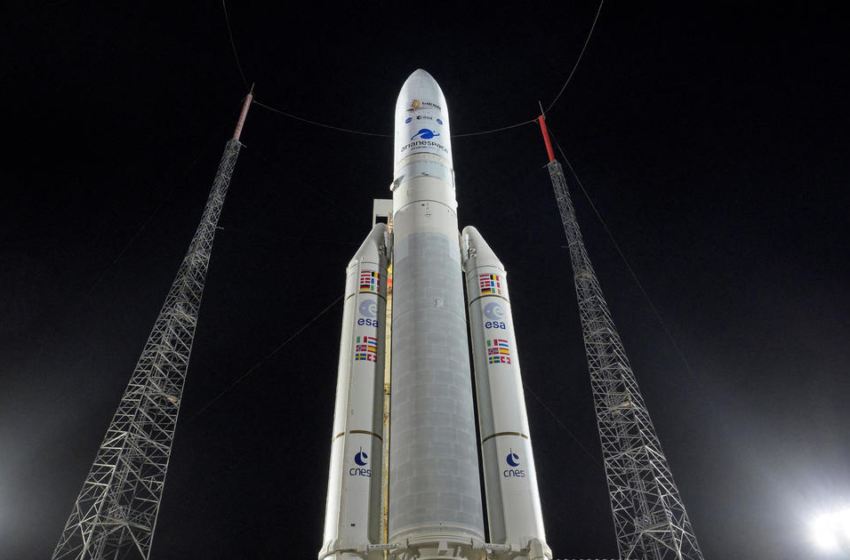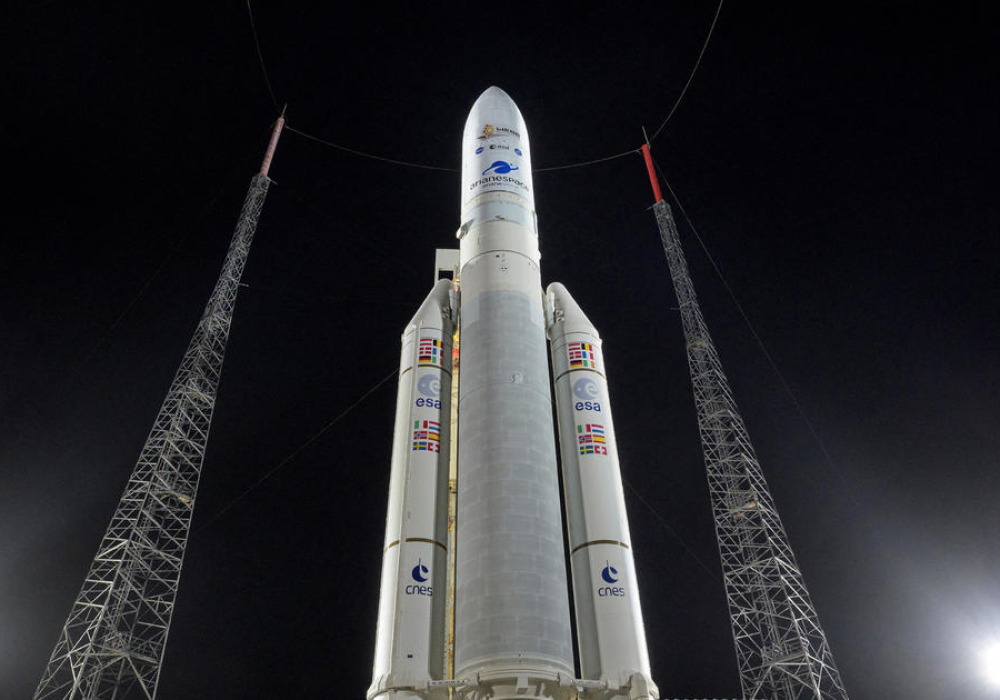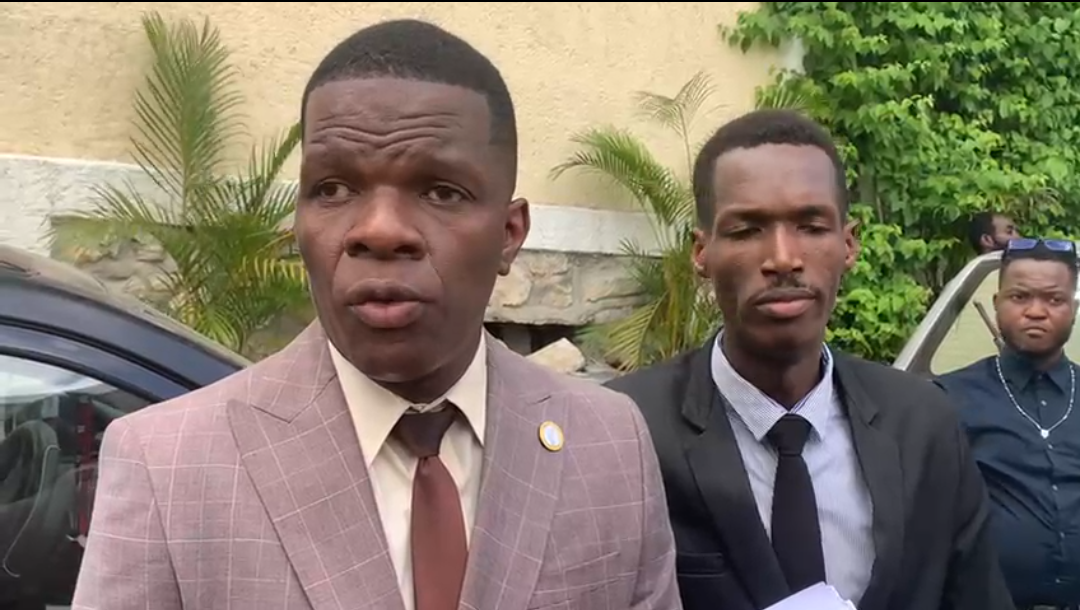NASA and its international partners are counting down to a Christmas Day launch of the most expensive science probe ever built, a $10 billion telescope designed to capture starlight from the first galaxies born in the fiery crucible of the Big Bang.
Billions over budget and years behind schedule, the James Webb Space Telescope is targeted for blastoff from the European Space Agency’s Kourou, French Guiana, launch site at 7:20 a.m. EST Saturday atop an Ariane 5 rocket, weather permitting.
Equipped with two solid-fuel strap-on boosters, the workhorse rocket will propel Webb away from the northeast coast of South America on an easterly trajectory, releasing the telescope to fly on its own about 27 minutes after liftoff.
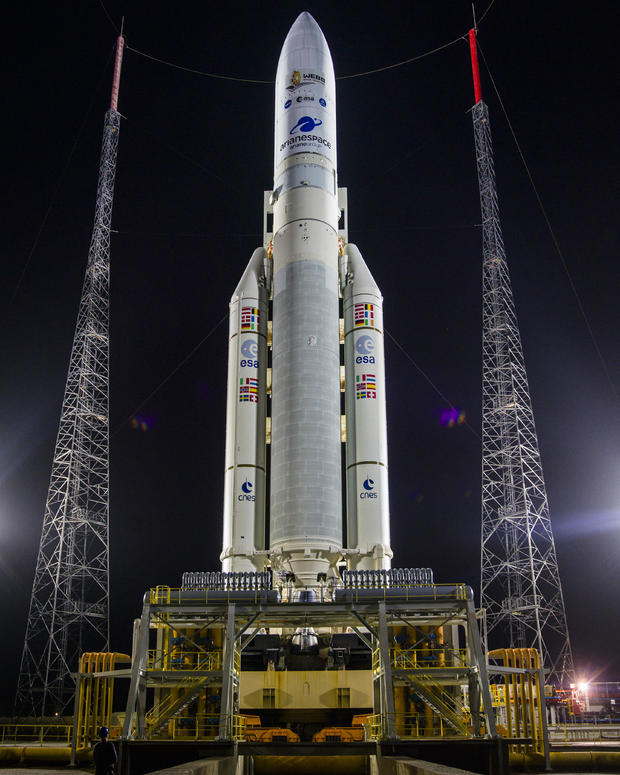
Chris Gunn/NASA via Getty Images
Still folded up to fit inside the Ariane 5’s nose cone, the observatory’s single solar panel, critical for recharging the spacecraft’s batteries, is scheduled to unfold about six minutes after separation, the first in a series of major milestones.
Webb will need a month to reach its planned parking place a million miles from Earth on the far side of the moon’s orbit — known as Lagrange Point 2 — where it can circle the sun in gravitational lockstep with Earth, providing the cold, dark environment needed for mission success.
The telescope is optimized to capture images of the first stars and galaxies to begin shining in the aftermath of the Big Bang, light that has been stretched into the infrared region of the spectrum by the expansion of space itself over the past 13.8 billion years.
That light can’t be seen by the iconic Hubble Space Telescope, which was designed to study visible light wavelengths. Even so, Hubble has detected galaxies dating back to within a half billion years of the Big Bang.
But Webb should be able to push several hundred million years beyond that, detecting light that began heading out when the universe was just 200 million years or so old. That’s the era when the cosmos first emerged from the hydrogen fog of birth and starlight began traveling freely through space.
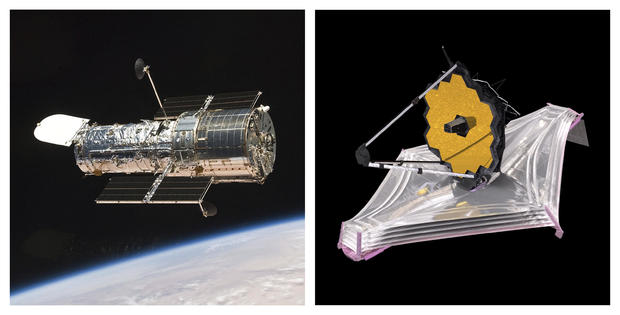
NASA via AP
Closer to home, Webb also will study the atmospheres of planets orbiting nearby stars to characterize their habitability and provide routine, up-close looks at planets, moons, asteroids and comets in Earth’s solar system from Mars outward.
But first, the telescope must deploy a five-layer sunshield the size of a tennis court, unfold its segmented 21.3-foot-wide primary mirror and unfold its secondary mirror on an articulating tripod.
Those make-or-break deployments, the most complex ever attempted for a science probe, will be carried out over the first two weeks of the mission.
If all of that goes well, engineers and astronomers will spend the next five months or so aligning the telescope’s optical system and calibrating its four science instruments. The first science images are expected in about six months.

